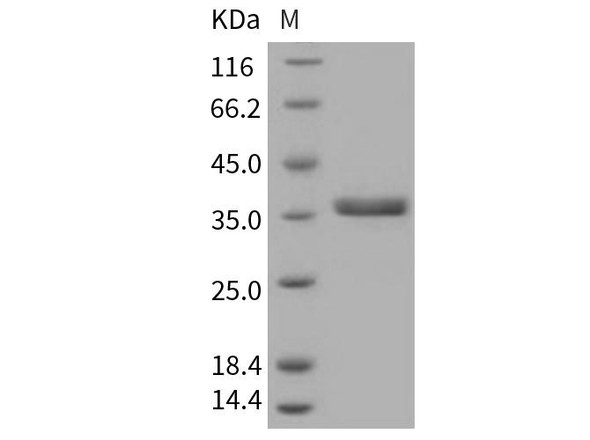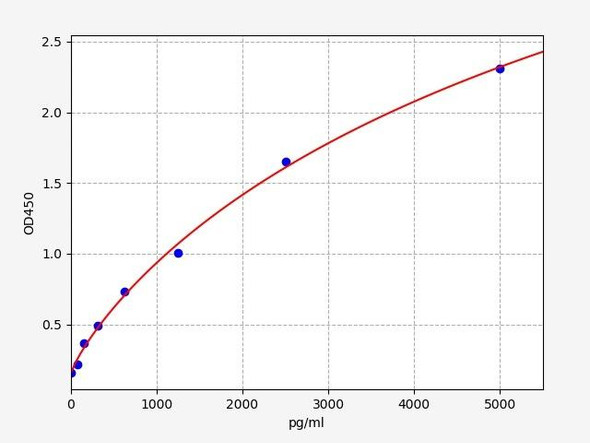Description
| Product Name: | Human Cathepsin S/CTSS Recombinant Protein (His tag) |
| Product Code: | RPES6052 |
| Size: | 20µg |
| Species: | Human |
| Expression Host: | HEK293 Cells |
| Synonyms: | Cathepsin S, CTSS, CTSS, MGC3886 |
| Mol Mass: | 36.3 kDa |
| AP Mol Mass: | 38 kDa |
| Tag: | C-His |
| Purity: | > 95 % as determined by reducing SDS-PAGE. |
| Endotoxin Level: | Please contact us for more information. |
| Bio Activity: | Testing in progress |
| Sequence: | Met 1-Ile 331 |
| Accession: | P25774 |
| Storage: | Generally, lyophilized proteins are stable for up to 12 months when stored at -20 to -80°C. Reconstituted protein solution can be stored at 4-8°C for 2-7 days. Aliquots of reconstituted samples are stable at < -20°C for 3 months. |
| Shipping: | This product is provided as lyophilized powder which is shipped with ice packs. |
| Formulation: | Lyophilized from sterile PBS, pH 7.4. Normally 5 % - 8 % trehalose, mannitol and 0.01% Tween80 are added as protectants before lyophilization. Please refer to the specific buffer information in the printed manual. |
| Reconstitution: | Please refer to the printed manual for detailed information. |
| Background: | Cathepsin S (CTSS), one of the lysosomal proteinases, has many important physiological functions in the nervous system, especially in process of extracellular matrix degradation and endocellular antigen presentation. CTSS is synthesized as inactive precursor of 331 amino acids consisting of a 15-aa signal peptide, a propeptide of 99 aa, and a mature polypeptide of 217 aa. It is activated in the lysosomes by a proteolytic cleavage of the propeptide. Cathepsin S is expressed in the lysosome of antigen presenting cells, primarily dendritic cells, B-cells and macrophages. Compared with other lysosomal cysteine proteases, cathepsin S has displayed some unique characteristics. Cathepsin S is most well known for its critical function in the proteolytic digestion of the invariant chain chaperone molecules, thus controlling antigen presentation to CD4+ T-cells by major histocompatibility complex (MHC) class II molecules or to NK1.1+ T-cells via CD1 molecules. Cathepsin S also appears to participate in direct processing of exogenous antigens for presentation by MHC class II to CD4+ T-cells, or in cross-presentation by MHC class I molecules to CD8+ T-cells. In addition, although direct evidence is still lacking, in its secreted form cathepsin S is implicated in degradation of the extracellular matrix, which may contribute to the pathology of a number of diseases, including arthritis, atherosclerosis, neurological diseases and chronic obstructive pulmonary disease. |






